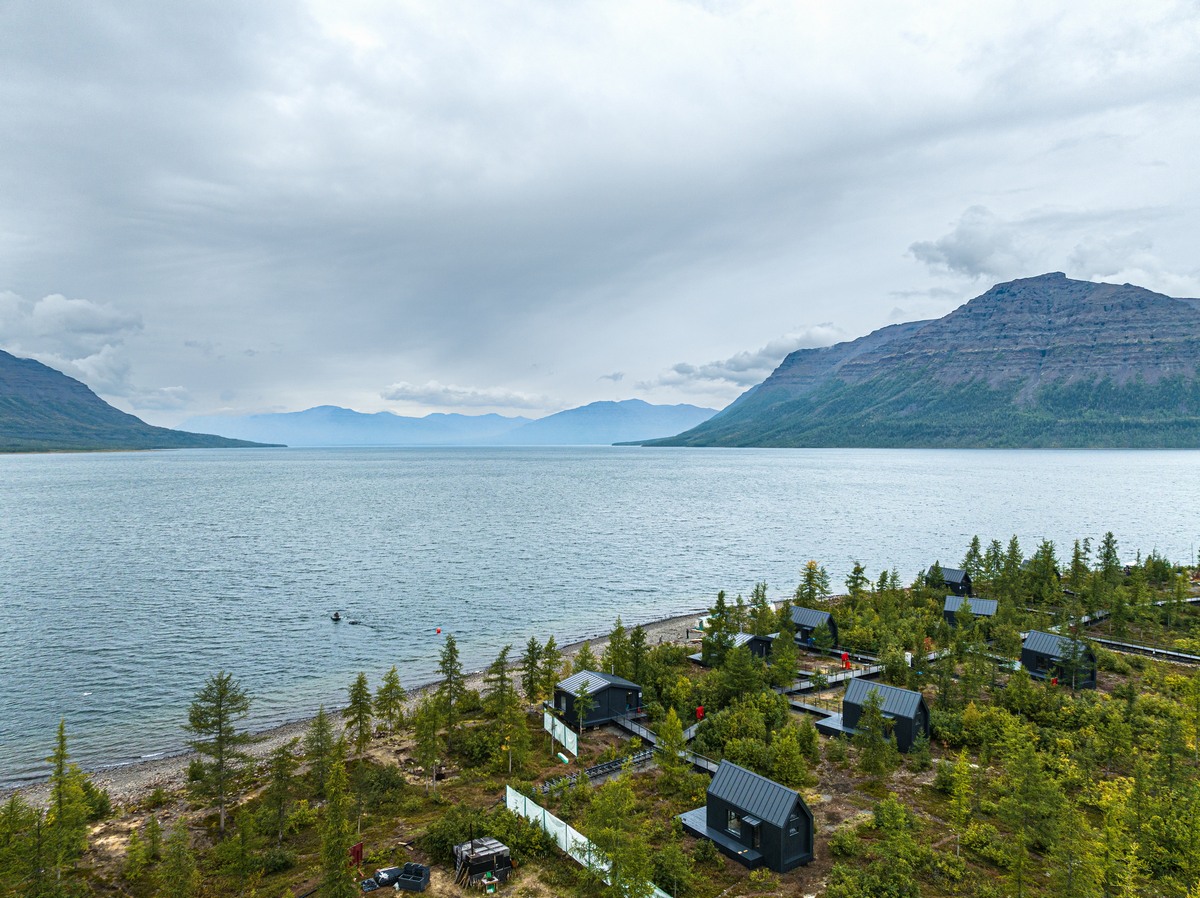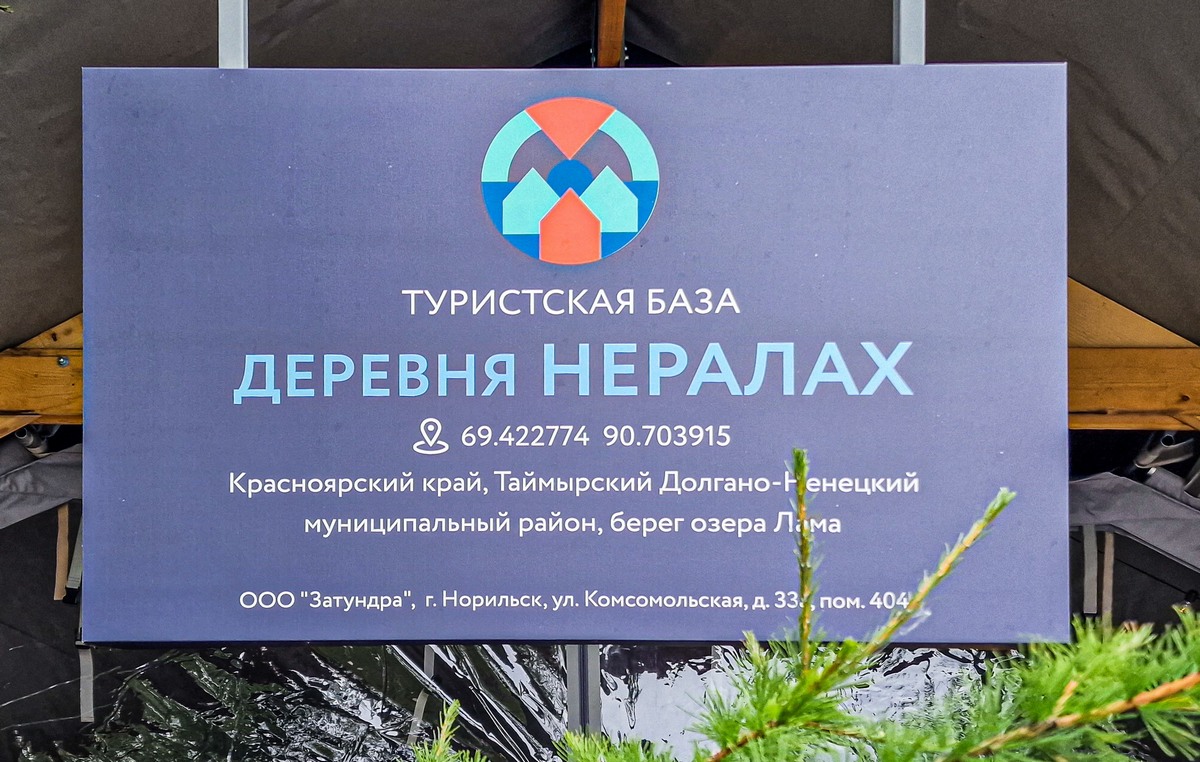September 28, 2022
September 27, 2022
Bunisyak, Princess and Irkindinsky. The jewels in Putorana’s crown.
Having had a Putorana warm-up, then gone over the history of how the Putorana Plateau came about, it’s now time for a closer look!…
The weather was excellent, the chopper was all set, and the day ahead promised to be a busy one. Into the helicopter we pile, and off we fly!…

September 21, 2022
Monumental, brutal; in places – simply splendid. That’s Putorana folks!…
Norilsk business and places of interest: done. But up here in the Far North, there’s actually another place of interest to the adventurous (and well-heeled) tourist, albeit 300 kilometers to the east, and only accessible by helicopter (told you!), and that is the Putorana Plateau.
Briefly, the Putorana Plateau is simply… a magnificently marvelous mountainous area! It’s not quite Kamchatka, of course, but it still gets a full five Ks as per my (KKKKKaspersky Tourism Awesomeness Categorization System) classification. Oh yes: top marks (there is no KKKKKK). Just to remind: 5K = unique, monumental and complex. Not bad for a region you might think is only good for extreme cold and nickel and copper extraction )…
5K it is, but that doesn’t immunize it from downsides…
Downside one: the weather. It’s practically never good around here. Very much reminiscent of Kamchatka or the Kurils.
September 15, 2022
How copper is made: from the ore to the finished product.
Norilsk walkabout – done. Norilsk borsch – supped, and already yearning for more.
Next up – an inspection of the industrial-technological processes upon which the city of Norilsk grew, and which still produces a broad spectrum of the elements from the periodic table.
Nornickel was kind enough to show us practically the whole process of the production of copper: extraction > fine crushing > preparation > smelting > electrolysis > dispatching. All that, coming up in this post…
First up for us – safety talk, down there on the ground floor (next to that pond in which carp swim!) ->
September 12, 2022
The world’s northernmost city.
Over the last three years I’ve probably visited more cities in Russia than anywhere else. The main reason of course having been the global travel restrictions during covid (which some countries are only just lifting, while others (e.g., China) aren’t even contemplating doing so). Then, this year, international travel for Russians has become a lot more difficult, with multiple connections being now the norm where before there were direct flights. Accordingly, I’ve been doing a lot more domestic travel – for both business trips and adventure-tourism expeditions. And I’ve been visiting plenty of places for the first time too. Just this year I’ve been to the following cities for the first time in my life:
And just the other week I had another +1: Norilsk…
Norilsk is no ordinary city, as you either knew before, or now know from the title of this blogpost. Yes, it’s very far north – so, of course, it gets frightfully cold (down to -60°C sometimes!) here in winter. But summer ain’t much better: constant rain. Then there are the strong winds year round. Then there’s the whole ecology… issues – but more on them in a bit…

September 9, 2022
Khabarovsk – the city with a bridge fetish.
The city of Khabarovsk, at least in the summer, is a most charming city – perfect for a long stroll. In the winter I imagine it’s not quite as pretty or walkable – all cold and icy and snowy; but then I think back to a wintery (-50°C!) Yakutsk, and realize Khabarovsk might be just as charming in the winter, albeit in a very different way. But we were here in the summer, and, after not having seen much of it over the last few weeks in the Kurils, the sun was out – and staying out ->
September 7, 2022
Kurils > Shantar Islands > Khabarovsk.
Farewell Kuril Islands, adios Sakhalin, and hasta la vista Kamchatka, where we began this expedition. But we had a worthy, if very… specific post-scriptum itinerary planned, so it wasn’t quite auf wiedersehen expedition just yet. Coming up were: the western shore of the Sea of Okhotsk (in particular, Bukhta Vrangelya, or Wrangel’s Bay) and the Shantar Islands.
// Note – there are two Bukhta Bays! There’s the one we visited – like I say, on the western shore of the Sea of Okhotsk (on the Russian mainland); but there’s also another, not that far away – directly south: Bukhta Vrangelya on the eastern shore of the neighboring Sea of Japan – also on mainland Russia! Confused yet? If not – get this: there’s also Wrangel Island, also in this region of the world – not far off the northeastern coast of Russia!

This place became popular thanks to bowhead whales, which come to party in large pods. Sometimes the small bay is teeming with them all frolicking about. There’s even been a documentary filmed all about their fun and frolics (choose English subtitles in the YouTube settings) ->
September 6, 2022
Our Kurils-2022 expedition: between the lines.
After Ebeko volcano, the trans-Paramushir trek, and the climb up Krenitsyn volcano, this here travelogue-blog series of pics-and-tales could have been brought to a close. For the weather after these three was practically always like this:
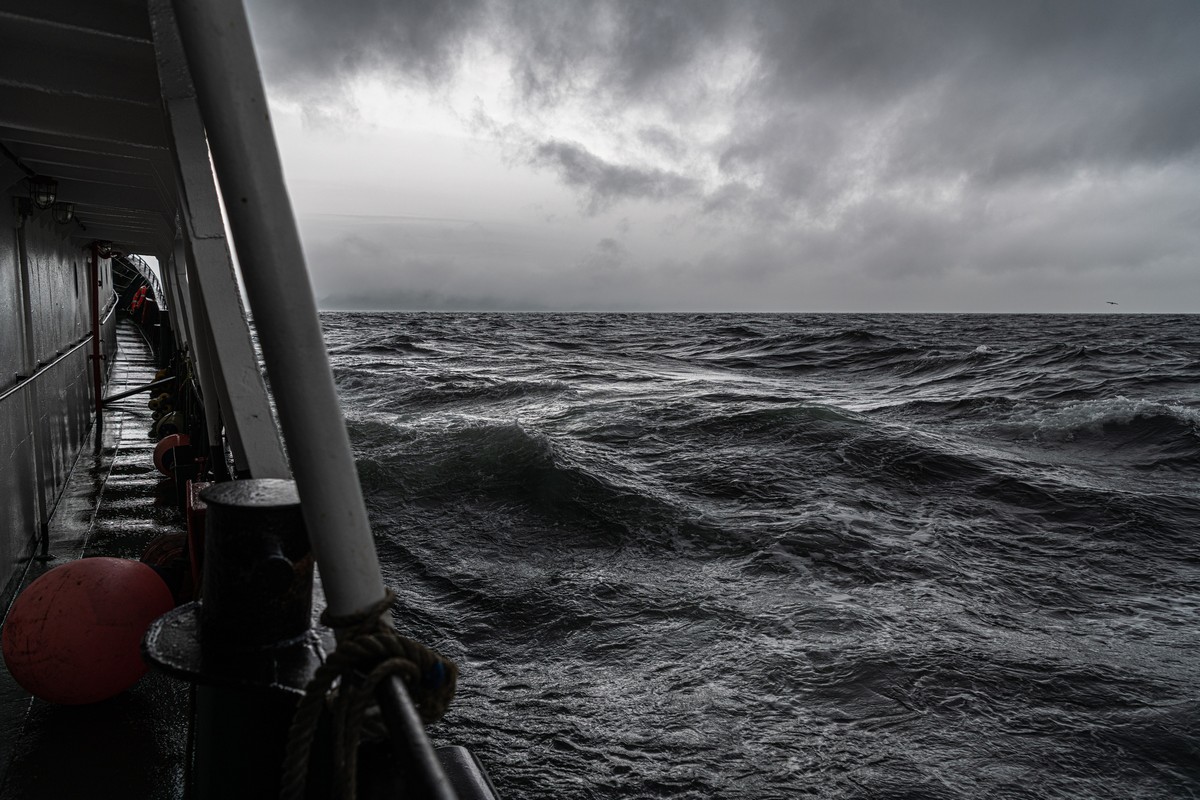
…But that would be giving in. Better would be to press rewind and look at the Kurilian adventure from the very beginning…
September 2, 2022
Contactless – very convenient, but not when it’s Ushishir volcano!
Of course, we weren’t expecting clear, sunny skies all day – every day – on our Kurils-2022 expedition. We weren’t even expecting the light showers that fall in places like the Côte d’Azur or Costa Brava that get swiftly shooed away by warm winds. This is the Kurils, baby – why a cyclone can kick in and shroud the islands in fog for days. But we were hoping for at least a little sun – like what we had back in 2019…
In particular, we were hoping for sun on our Ushishir day(s). Here’s why:
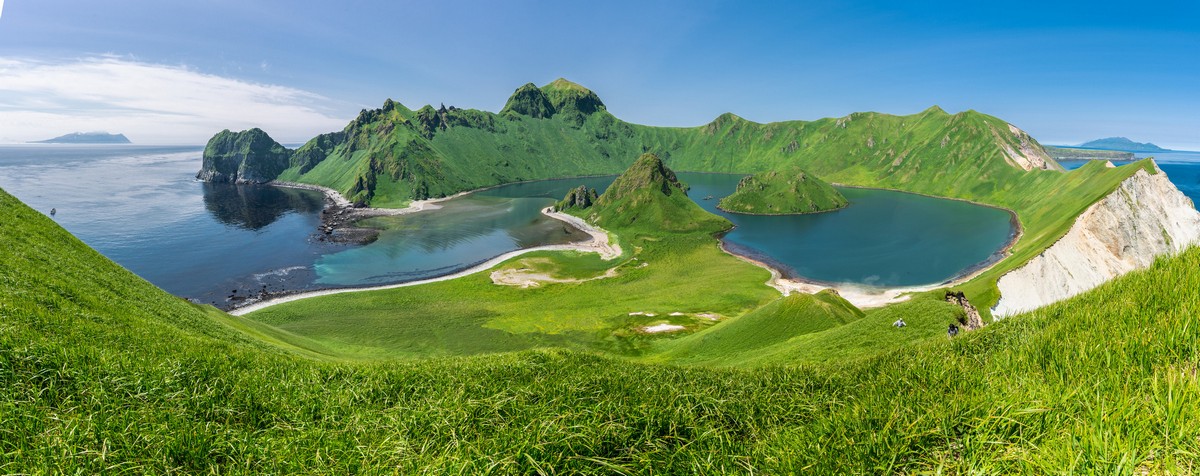
And from the other side… ->
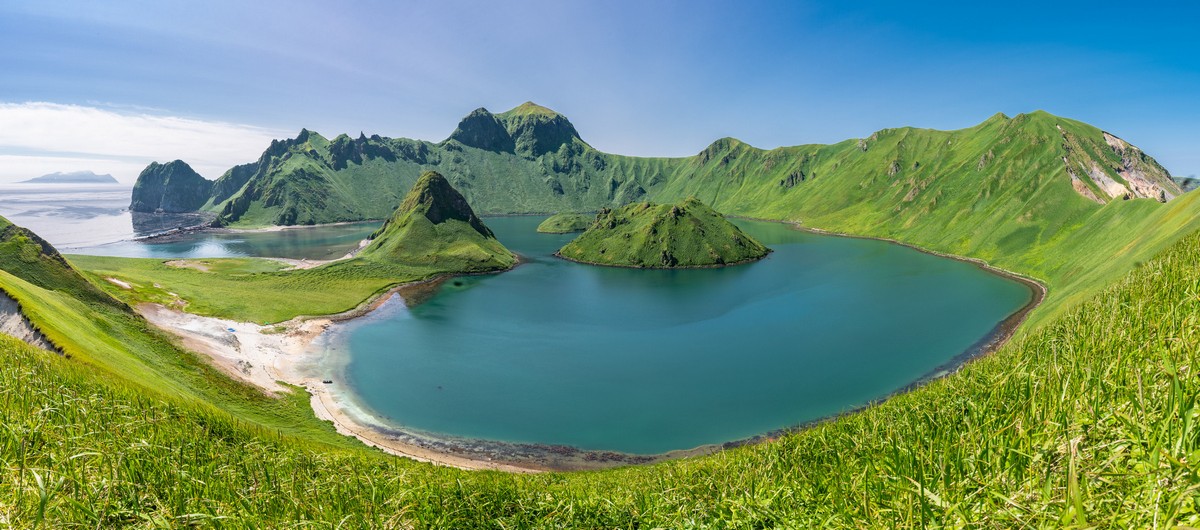
August 31, 2022
Krenitsyn volcano is the world’s most-beautiful spot. So, did we get up it – or not?!
If asked where the most beautiful, magical, goose-bumping, entrancing, OMGing place is on the planet is, what would be your answer?
I guess there’d be as many answers to the question as there are stars in the sky, and none would be wrong – for beauty is always in the eye of the beholder…
Some might answer – the Grand Canyon; others – the view down Madrid’s Gran Via; yet others – the reflections in a puddle in their garden! Some prefer man-made things, others natural. I like both, but my favorite of all happens to be natural. And this is it:
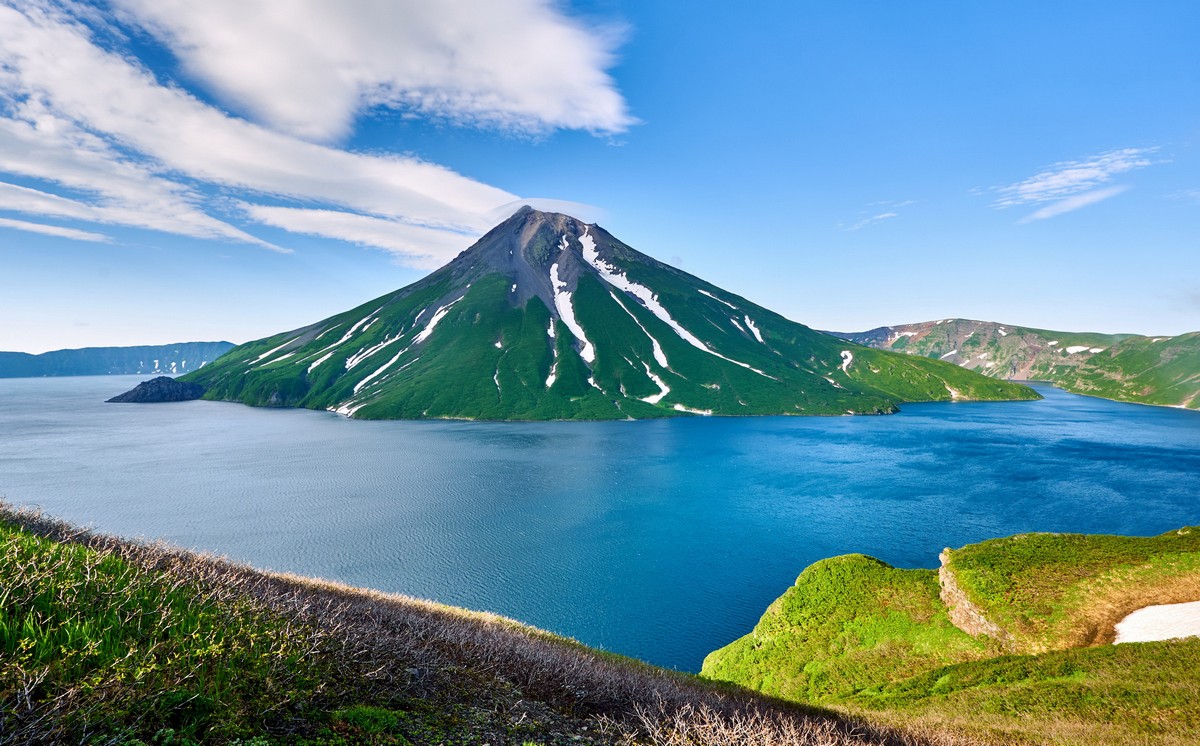
…At least – in good weather.
Yes folks, this is the one – the ultimate, the very best of all the best must-see places on the planet, including all my Top-100 places. It is the King of the Volcanoes – Krenitsyn volcano, on the volcanic island of Onekotan – one of the Kurils:
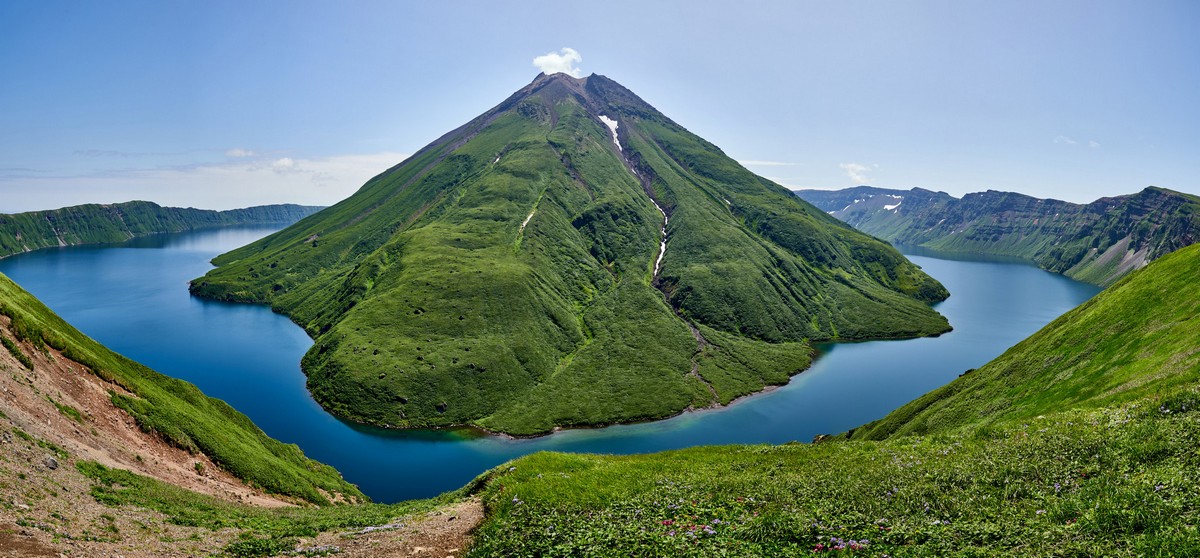
And when I say it’s the most beautiful place on the planet, I reckon it could very well be yours too – if you were ever to behold it. For “I’ve been around”, as it were. I’ve been globetrotting for the last quarter-century visiting a great many places on business while also getting to see what those places have on offer in terms of their sights of interest and beauty. I’ve also been on a great many vacations to some of the more unusually beautiful places on the planet. So, to come top of my list – trying not to blow my own trumpet as much as I can – really should stand for something. I hope so, anyway!…
